Foreword / YouTube Video Review
This speaker was loaned to me by the owner. I was only loaned a single and was therefore only able to conduct listening tests in mono.
The review on this website is a brief overview and summary of the objective performance of this speaker. It is not intended to be a deep dive. Moreso, this is information for those who prefer “just the facts” and prefer to have the data without the filler. The video below has more discussion.
< coming soon >
Information and Photos
Some specs from the manufacturer can be found here. Here is a blurb from a retailer:
Polk packed a lot of technological innovation into their understated and elegant-looking Reserve R100 bookshelf speakers. The 5-1/4” molded Turbine Cone™ driver delivers accurate, natural-sounding midrange. It’s the same driver the company uses in their high-end Legend Series. The patented X-Port helps these speakers deliver solid bass with no distortion. And the 1” ring radiator tweeter features an integrated waveguide for a broad “sweet spot” with no unwanted high-frequency resonance. u can use this pair of R100s with confidence as part of an audiophile-grade stereo system, or as the front or rear channels of a Reserve Series surround sound system.
Price is approximately $650 USD for the pair.
If you are interested in purchasing this speaker, please consider using the following affiliate link which earns me a small commission at no additional cost to you: Buy from Amazon
CTA-2034 (SPINORAMA) and Accompanying Data
All data collected using Klippel’s Near-Field Scanner. The Near-Field-Scanner 3D (NFS) offers a fully automated acoustic measurement of direct sound radiated from the source under test. The radiated sound is determined in any desired distance and angle in the 3D space outside the scanning surface. Directivity, sound power, SPL response and many more key figures are obtained for any kind of loudspeaker and audio system in near field applications (e.g. studio monitors, mobile devices) as well as far field applications (e.g. professional audio systems). Utilizing a minimum of measurement points, a comprehensive data set is generated containing the loudspeaker’s high resolution, free field sound radiation in the near and far field. For a detailed explanation of how the NFS works and the science behind it, please watch the below discussion with designer Christian Bellmann:
The reference plane in this test is between the midrange and tweeter. Before running the Klippel NFS, I did a few quasi-anechoic measurements to find the most ideal reference plane. One would think the tweeter plane is the best but as it turned out, thanks to a dip at 4kHz on the tweeter axis, the most neutral vertical axis is actually between the tweeter and midrange. You can also verify this in the vertical contour plot data. So, that’s what I went with. The speaker was measured with the grille off unless otherwise noted.
Measurements are provided in a format in accordance with the Standard Method of Measurement for In-Home Loudspeakers (ANSI/CTA-2034-A R-2020). For more information, please see this link.
CTA-2034 / SPINORAMA:
The On-axis Frequency Response (0°) is the universal starting point and in many situations it is a fair representation of the first sound to arrive at a listener’s ears.
The Listening Window is a spatial average of the nine amplitude responses in the ±10º vertical and ±30º horizontal angular range. This encompasses those listeners who sit within a typical home theater audience, as well as those who disregard the normal rules when listening alone.
The Early Reflections curve is an estimate of all single-bounce, first-reflections, in a typical listening room.
Sound Power represents all of the sounds arriving at the listening position after any number of reflections from any direction. It is the weighted rms average of all 70 measurements, with individual measurements weighted according to the portion of the spherical surface that they represent.
Sound Power Directivity Index (SPDI): In this standard the SPDI is defined as the difference between the listening window curve and the sound power curve.
Early Reflections Directivity Index (EPDI): is defined as the difference between the listening window curve and the early reflections curve. In small rooms, early reflections figure prominently in what is measured and heard in the room so this curve may provide insights into potential sound quality.
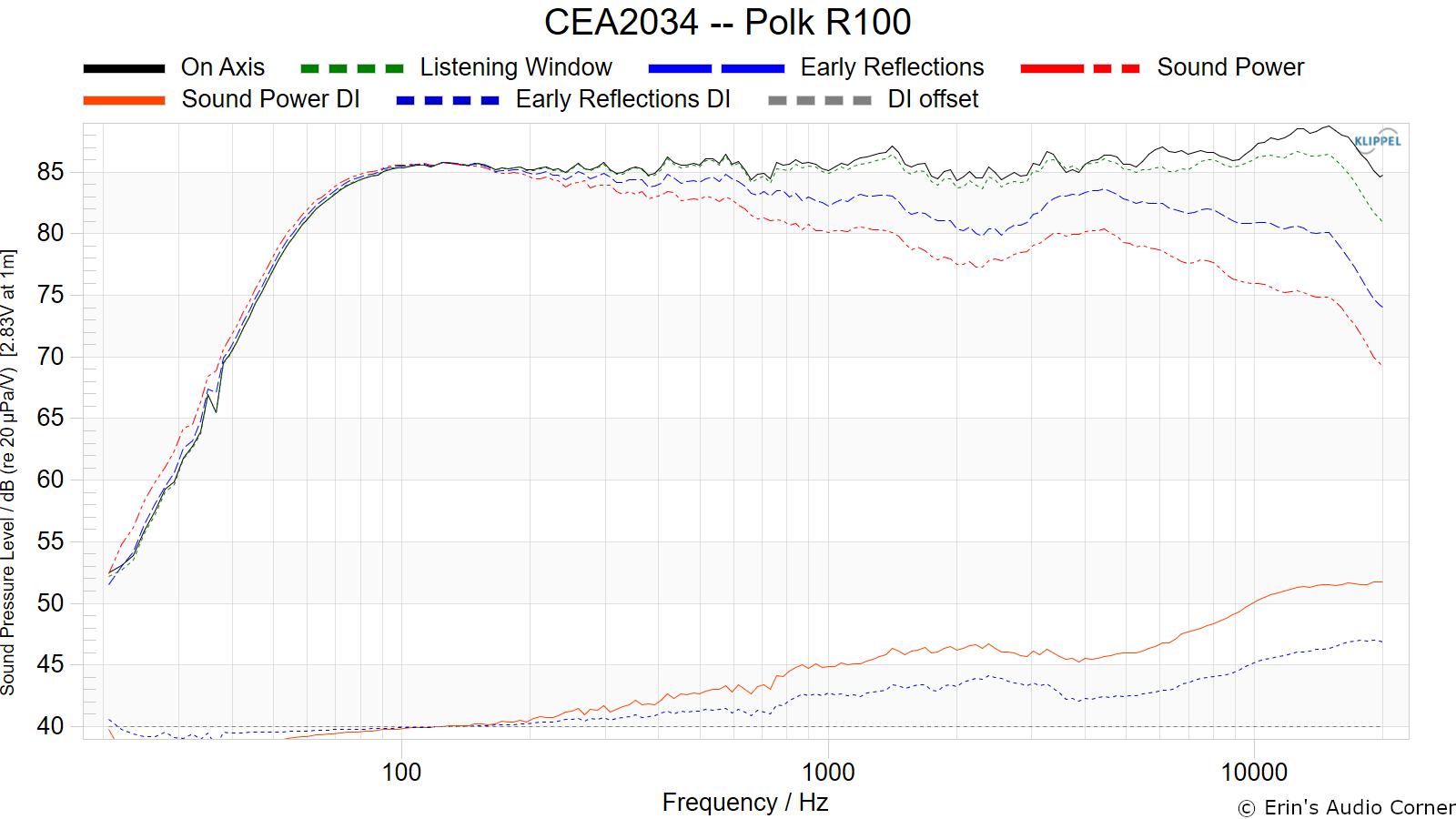
Early Reflections Breakout:
Floor bounce: average of 20º, 30º, 40º down
Ceiling bounce: average of 40º, 50º, 60º up
Front wall bounce: average of 0º, ± 10º, ± 20º, ± 30º horizontal
Side wall bounces: average of ± 40º, ± 50º, ± 60º, ± 70º, ± 80º horizontal
Rear wall bounces: average of 180º, ± 90º horizontal
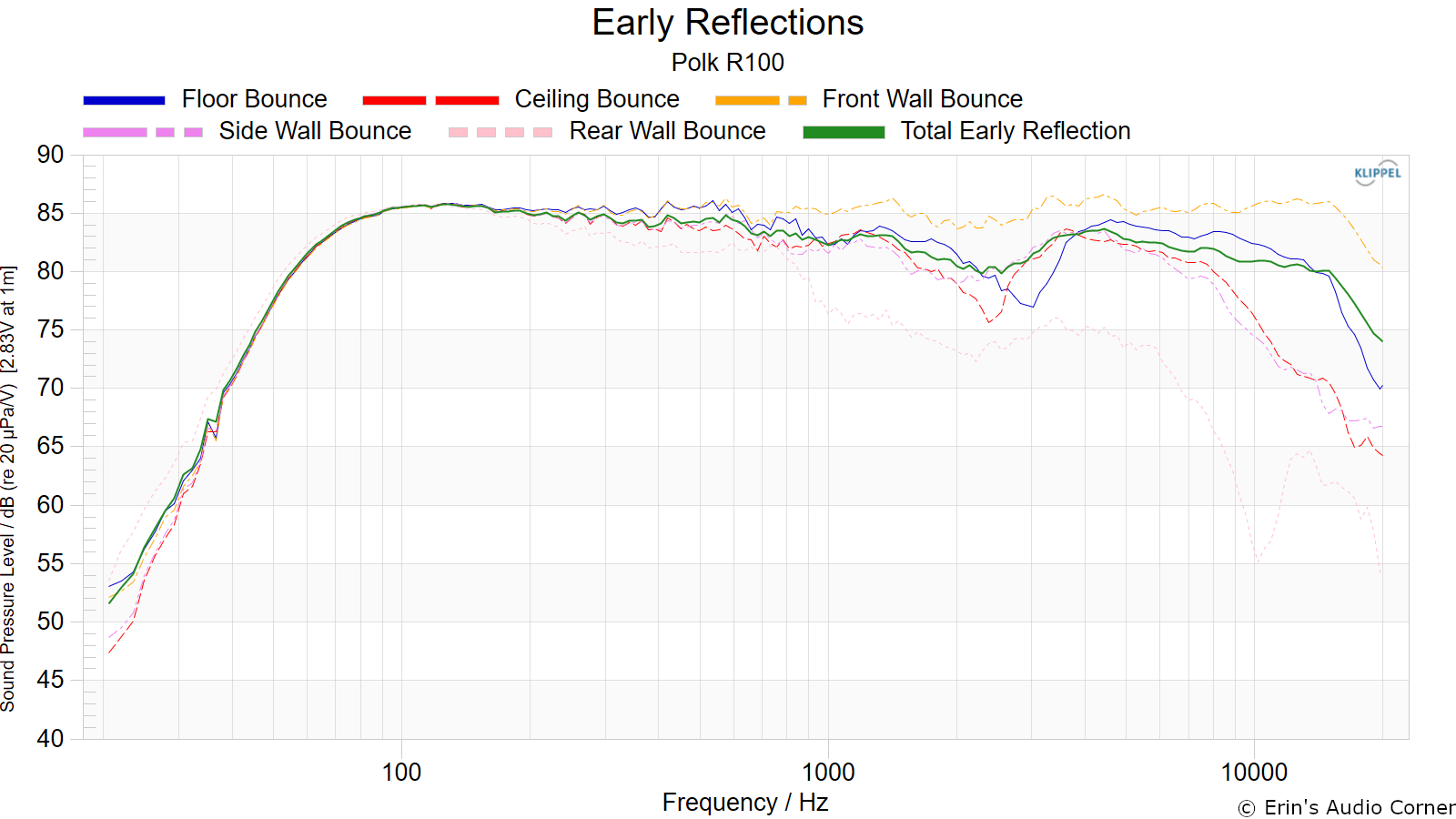
Estimated In-Room Response:
In theory, with complete 360-degree anechoic data on a loudspeaker and sufficient acoustical and geometrical data on the listening room and its layout it would be possible to estimate with good precision what would be measured by an omnidirectional microphone located in the listening area of that room. By making some simplifying assumptions about the listening space, the data set described above permits a usefully accurate preview of how a given loudspeaker might perform in a typical domestic listening room. Obviously, there are no guarantees, because individual rooms can be acoustically aberrant. Sometimes rooms are excessively reflective (“live”) as happens in certain hot, humid climates, with certain styles of interior décor and in under-furnished rooms. Sometimes rooms are excessively “dead” as in other styles of décor and in some custom home theaters where acoustical treatment has been used excessively. This form of post processing is offered only as an estimate of what might happen in a domestic living space with carpet on the floor and a “normal” amount of seating, drapes and cabinetry.
For these limited circumstances it has been found that a usefully accurate Predicted In-Room (PIR) amplitude response, also known as a “room curve” is obtained by a weighted average consisting of 12 % listening window, 44 % early reflections and 44 % sound power. At very high frequencies errors can creep in because of excessive absorption, microphone directivity, and room geometry. These discrepancies are not considered to be of great importance.

Horizontal Frequency Response (0° to ±90°):

Vertical Frequency Response (0° to ±40°):

Horizontal Contour Plot (not normalized):
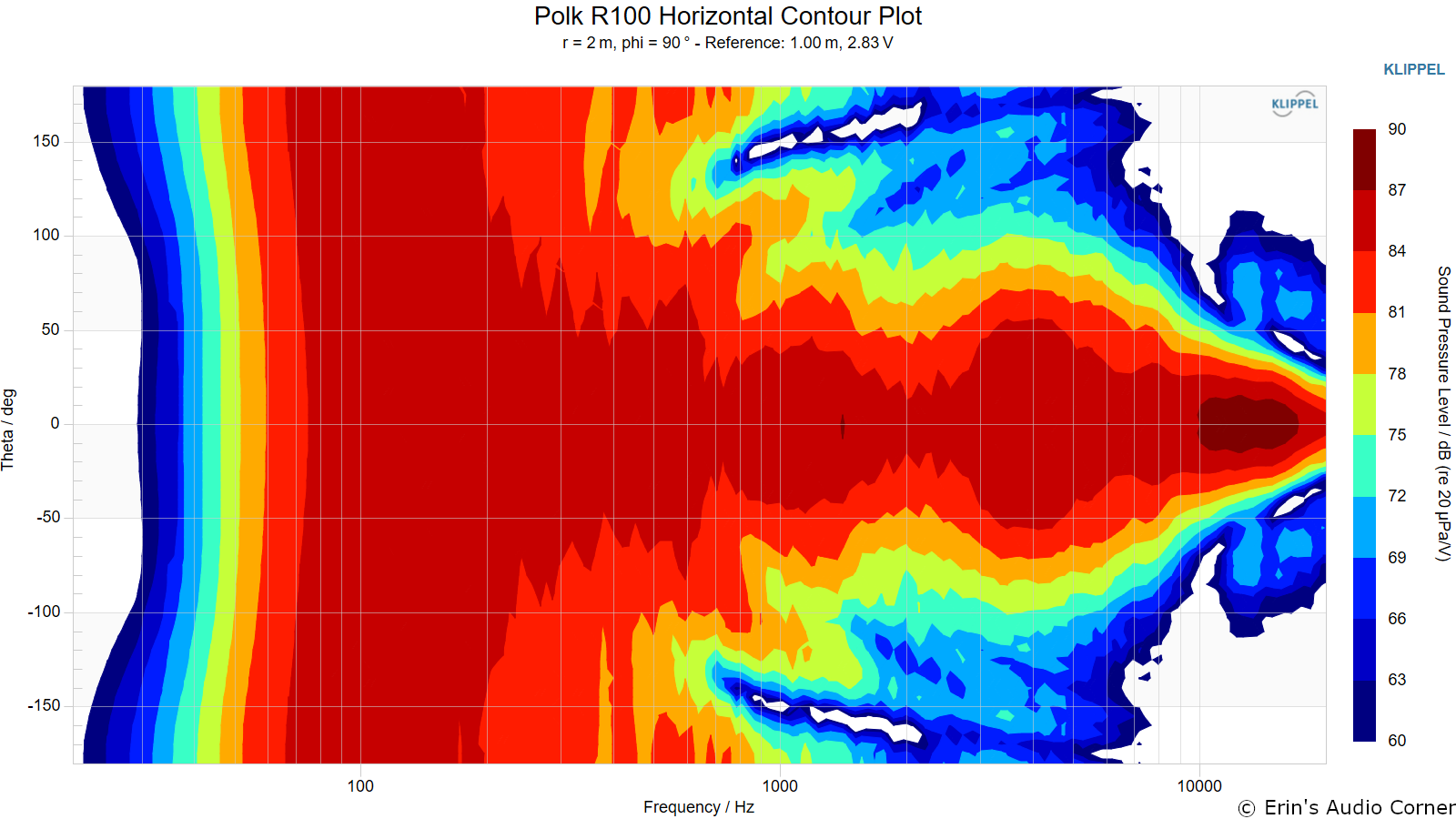
Horizontal Contour Plot (normalized):
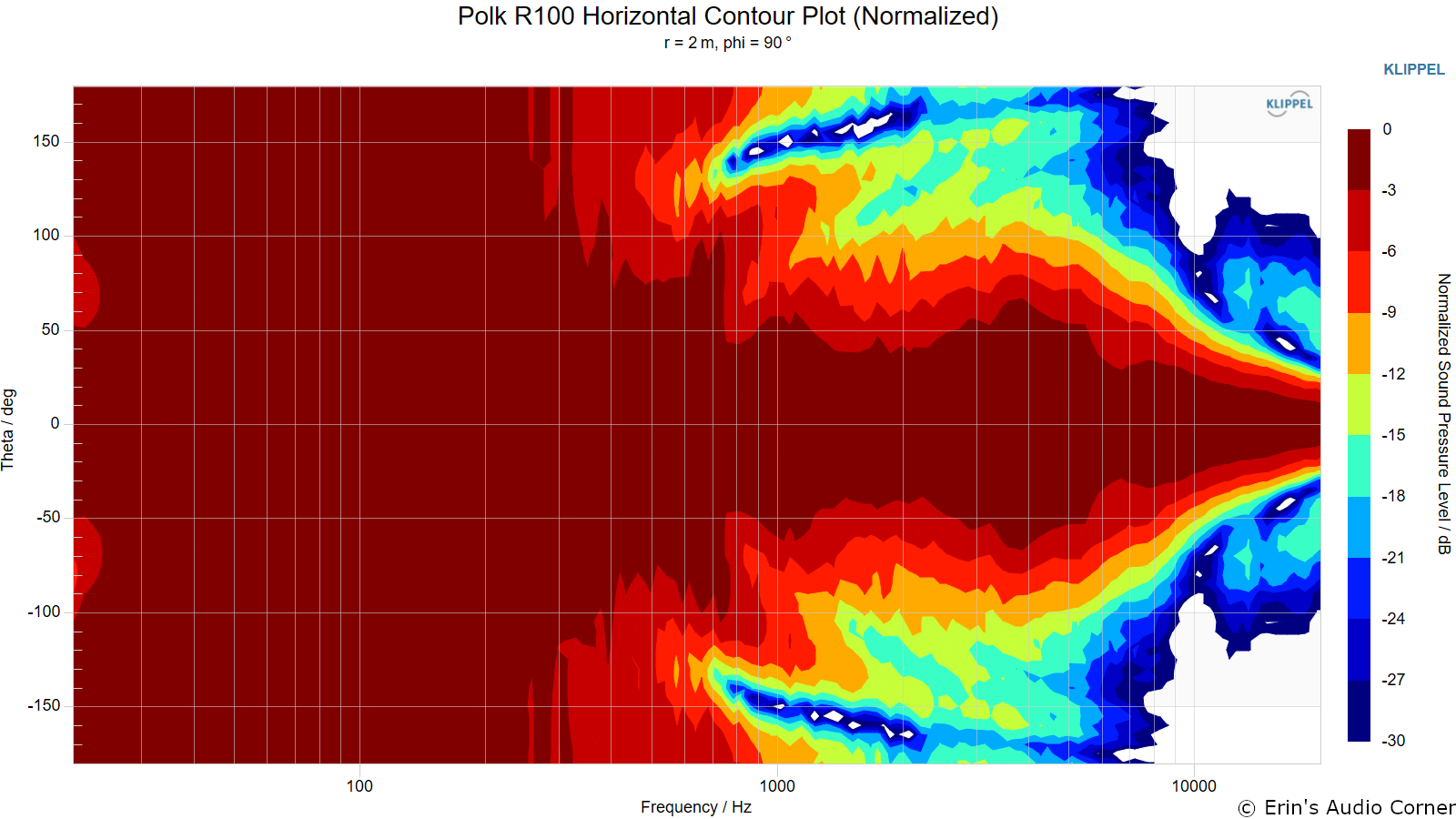
Vertical Contour Plot (not normalized):
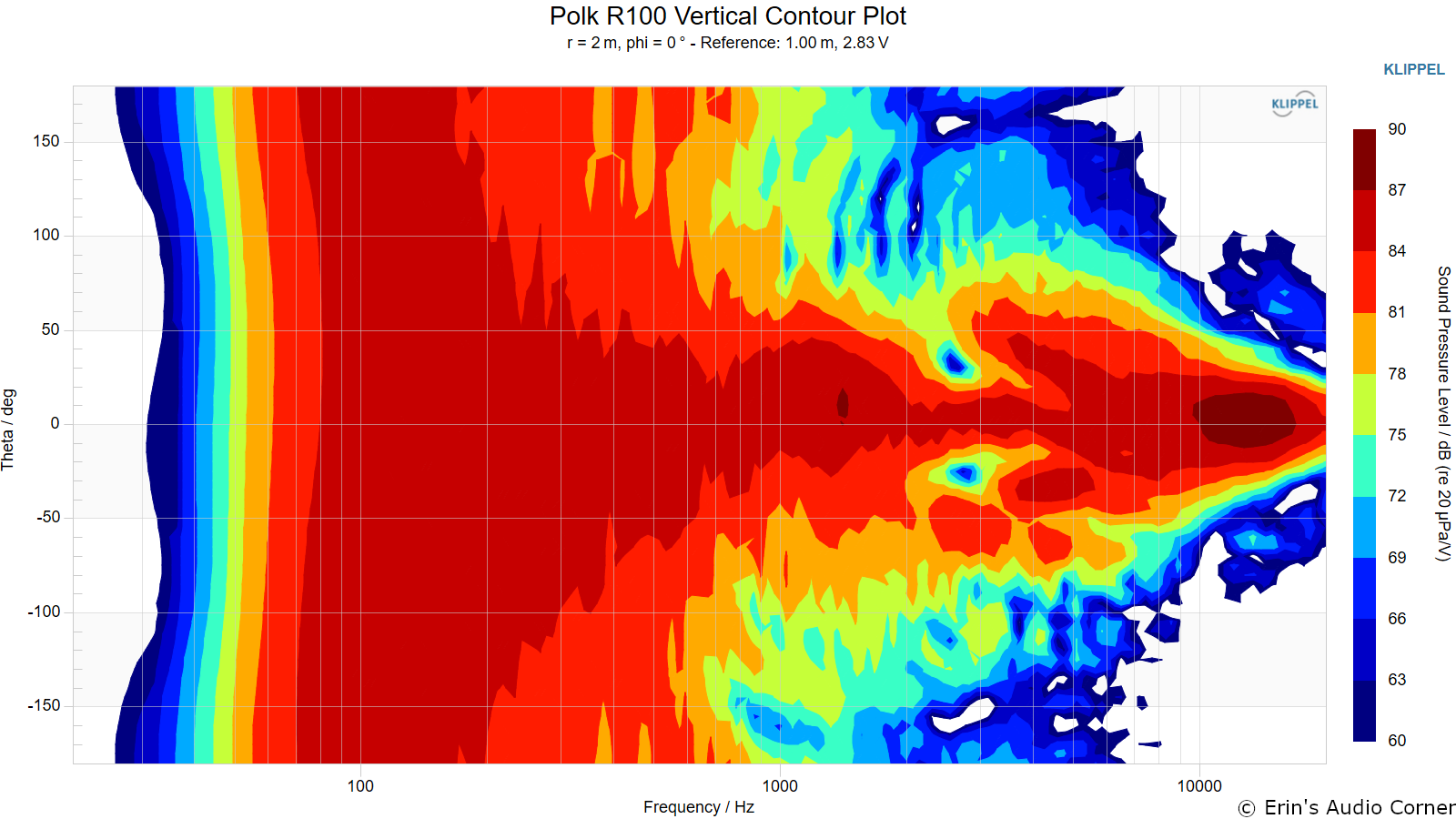
Vertical Contour Plot (normalized):
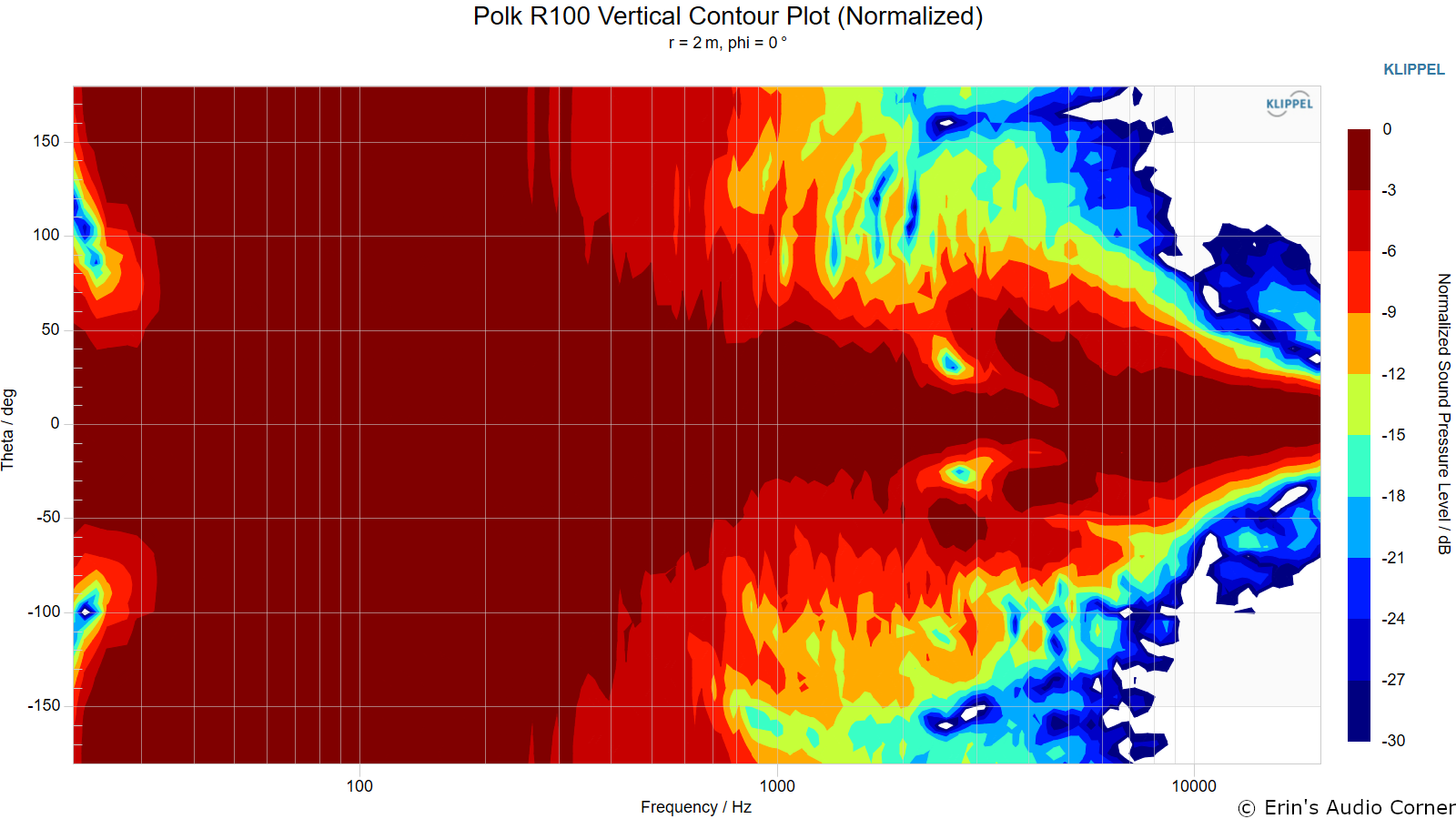
“Globe” Plots
Horizontal Polar (Globe) Plot:
This represents the sound field at 2 meters - above 200Hz - per the legend in the upper left.
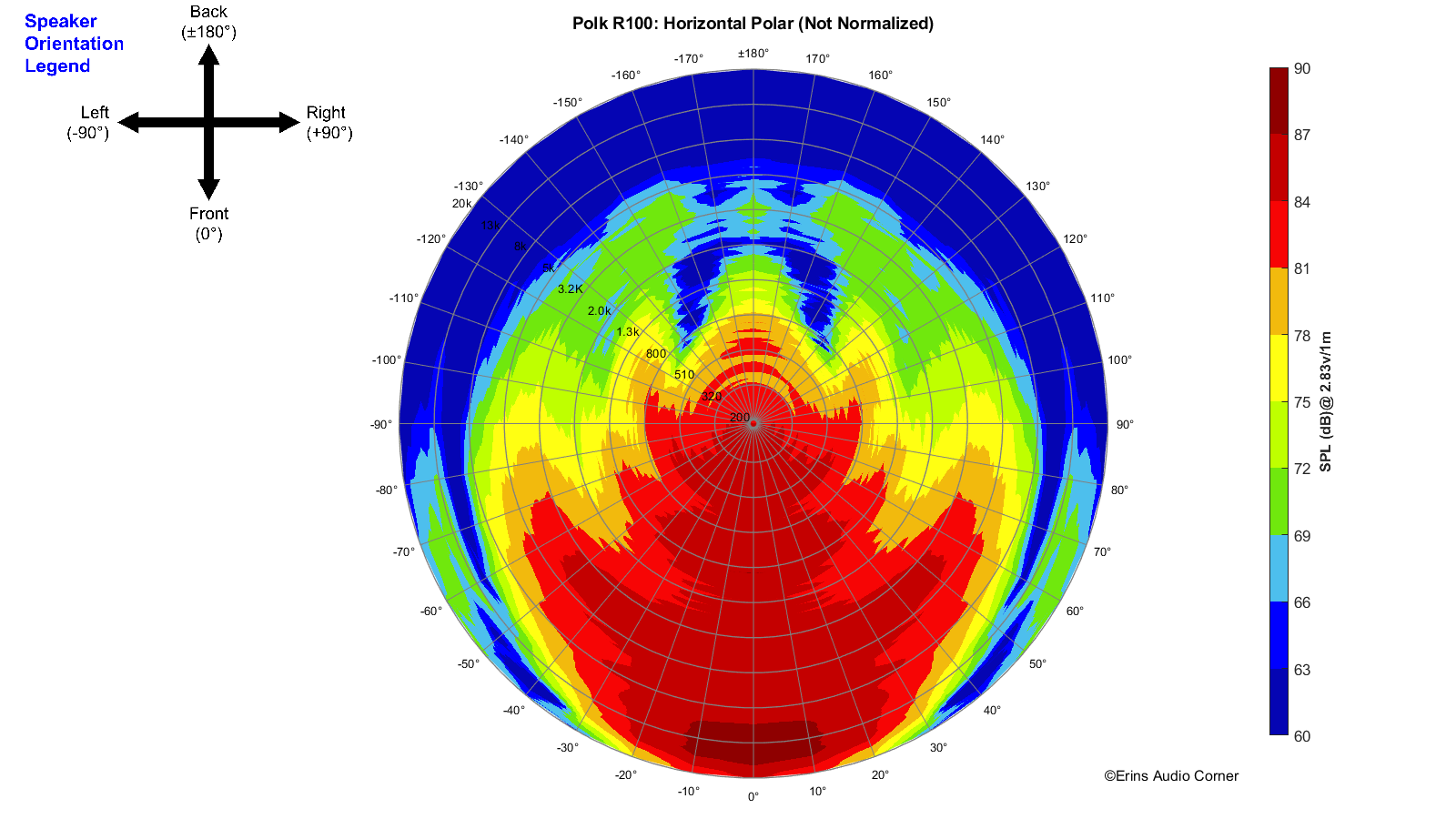
Vertical Polar (Globe) Plot:
This represents the sound field at 2 meters - above 200Hz - per the legend in the upper left.
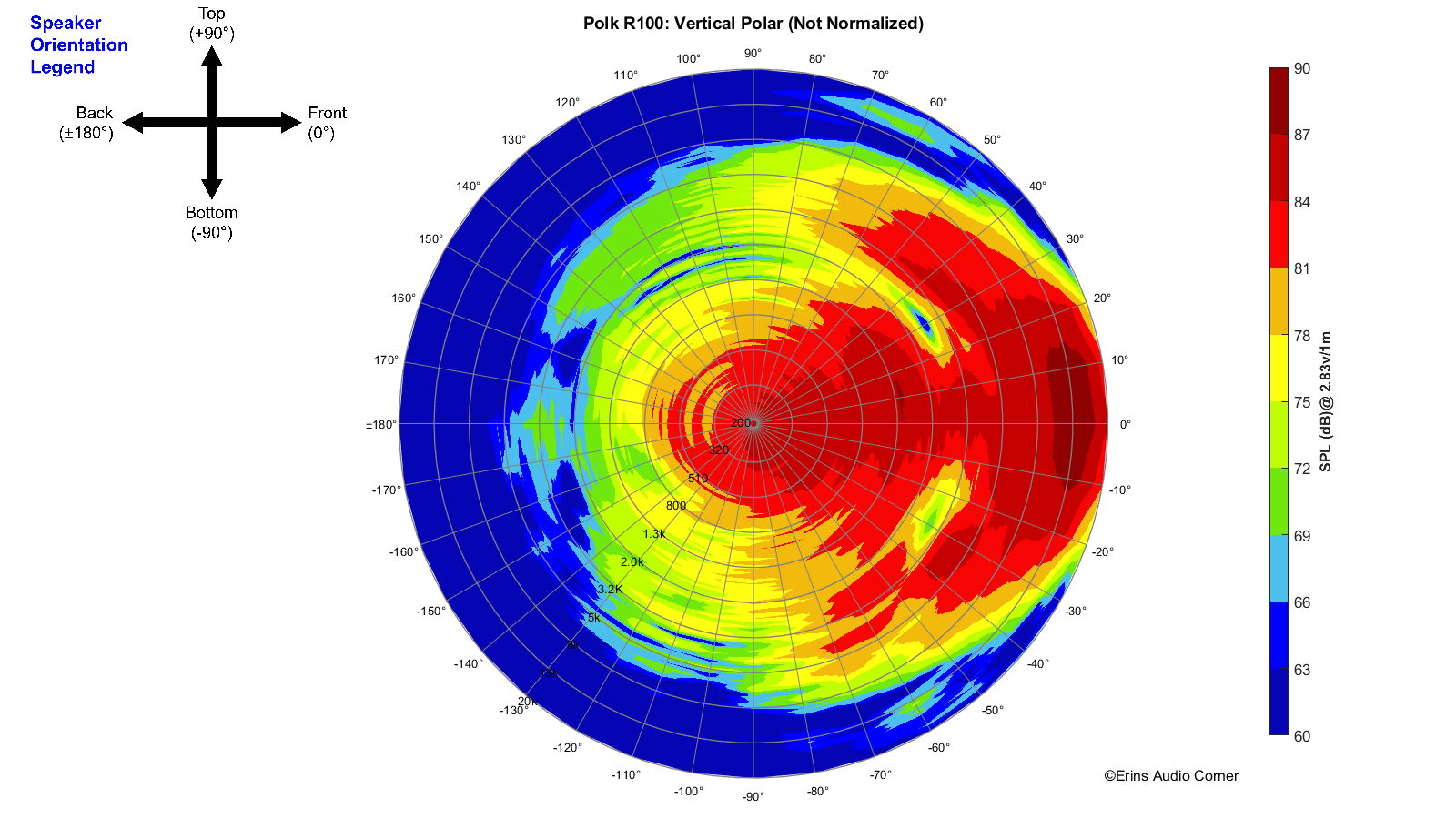
Additional Measurements
On-Axis Response Linearity

Impedance Magnitude and Phase
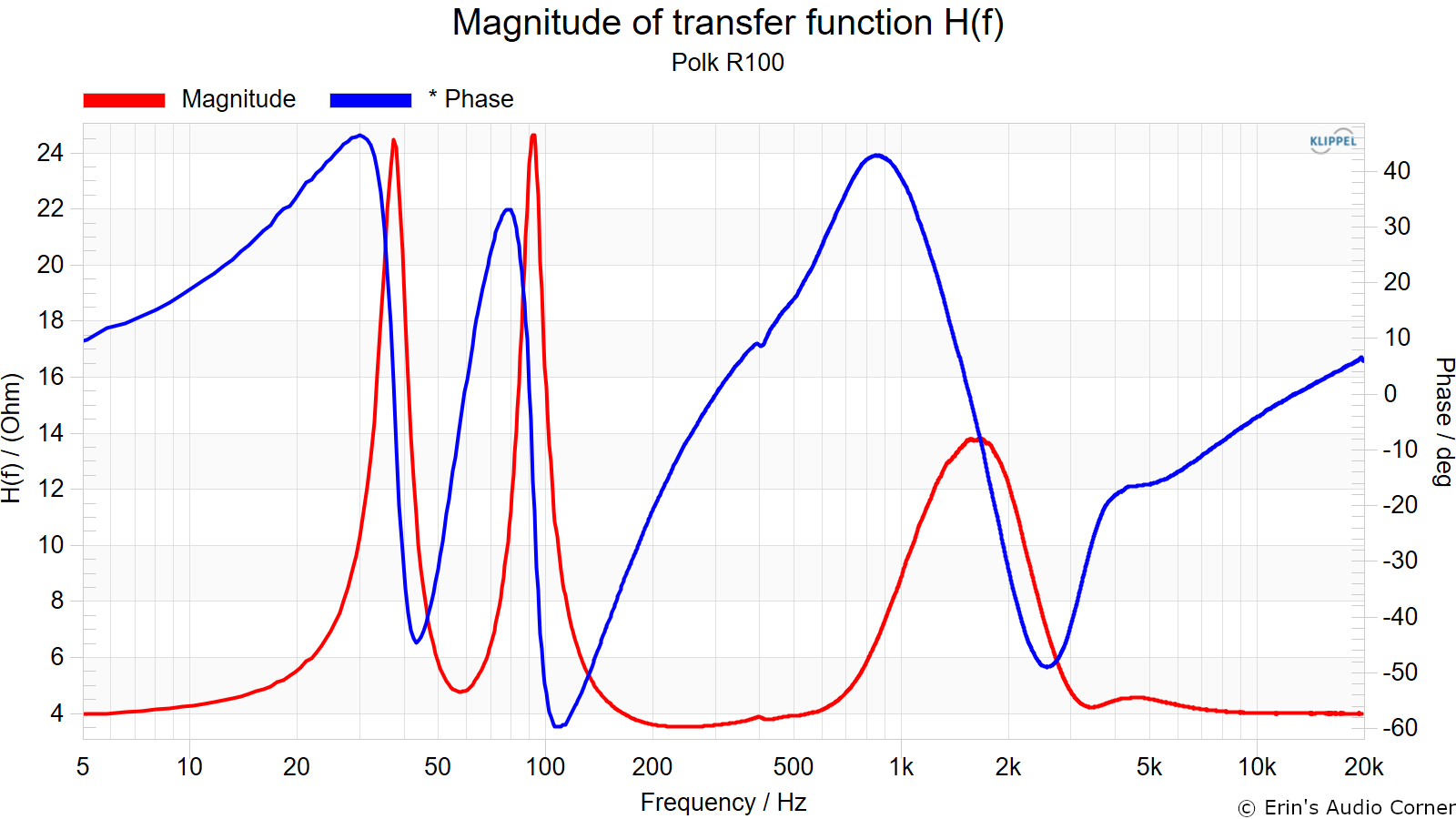
Near-Field Response
Nearfield response of individual drive units:
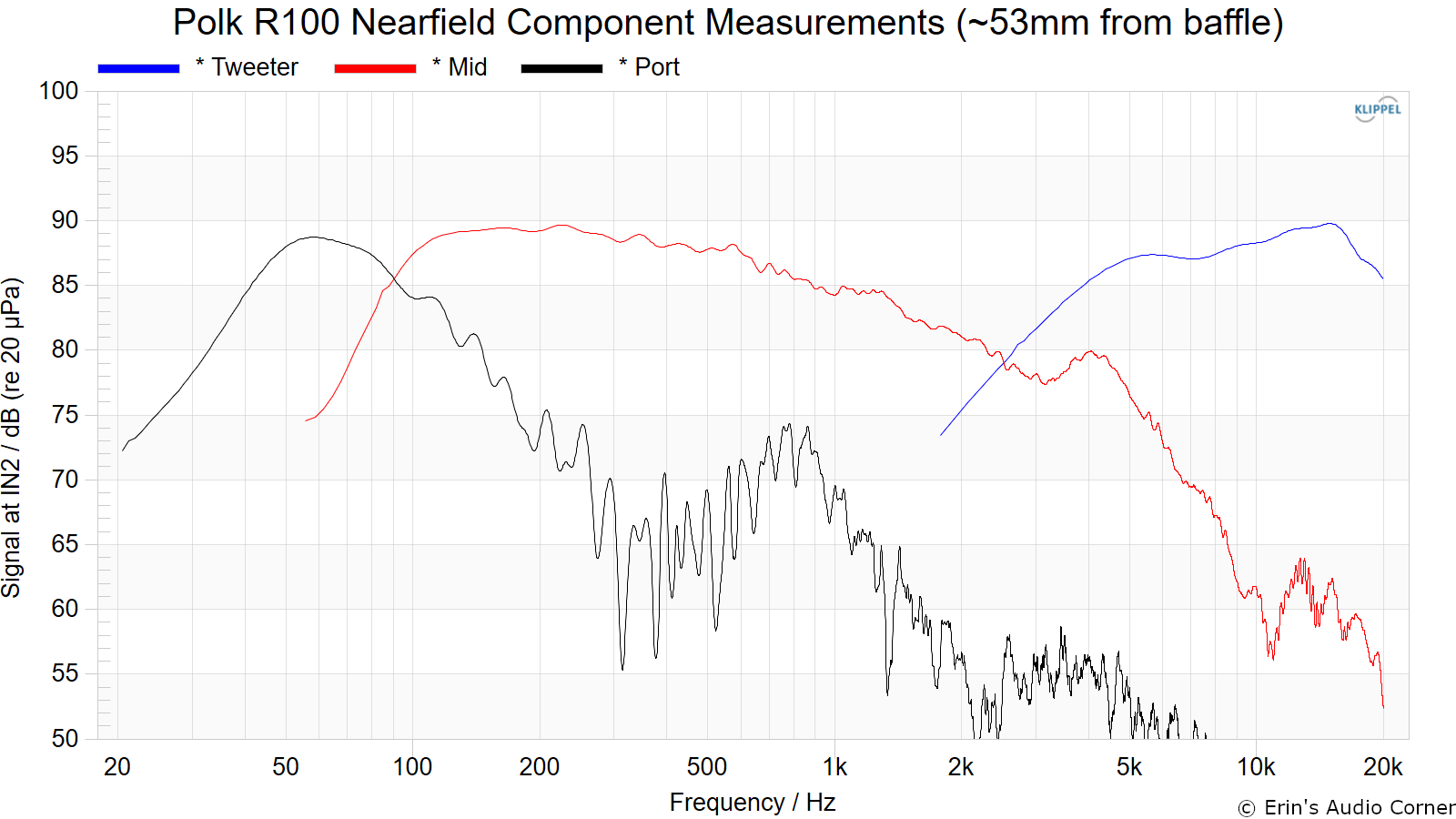
Harmonic Distortion
Harmonic Distortion at 86dB @ 1m:
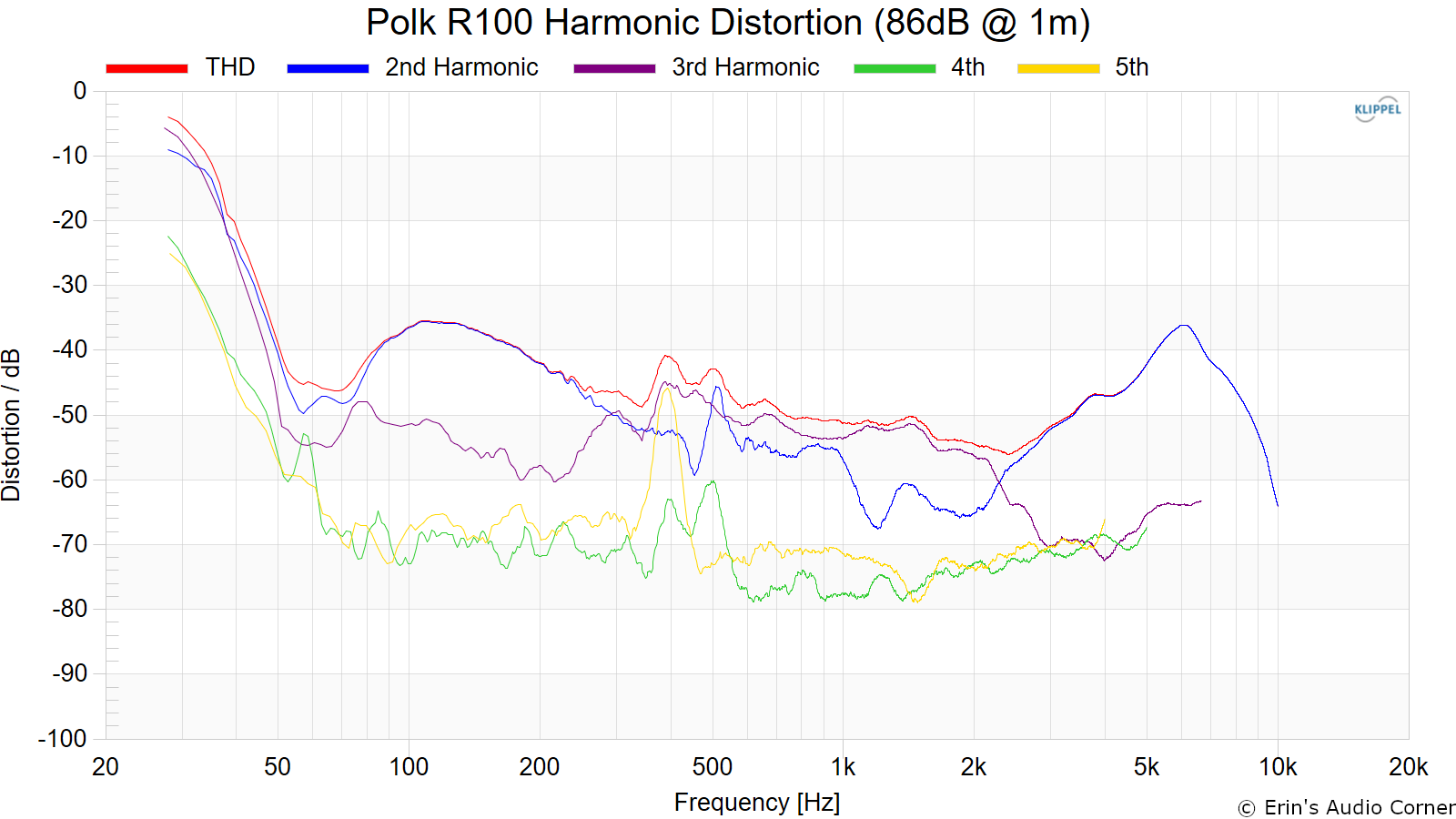
Harmonic Distortion at 96dB @ 1m:
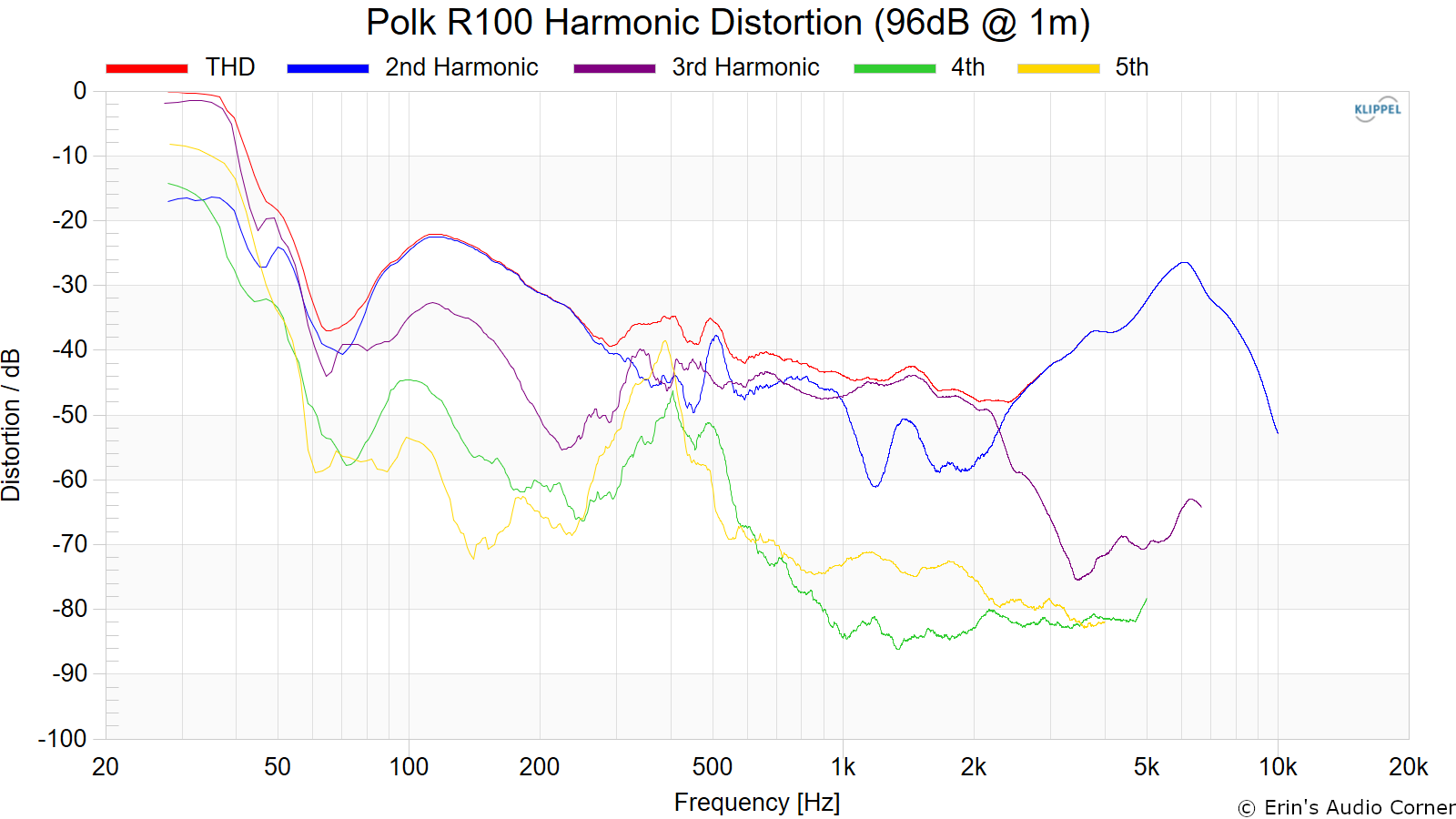
Dynamic Range (Instantaneous Compression Test)
The below graphic indicates just how much SPL is lost (compression) or gained (enhancement; usually due to distortion) when the speaker is played at higher output volumes instantly via a 2.7 second logarithmic sine sweep referenced to 76dB at 1 meter. The signals are played consecutively without any additional stimulus applied. Then normalized against the 76dB result.
The tests are conducted in this fashion:
- 76dB at 1 meter (baseline; black)
- 86dB at 1 meter (red)
- 96dB at 1 meter (blue)
- 102dB at 1 meter (purple)
The purpose of this test is to illustrate how much (if at all) the output changes as a speaker’s components temperature increases (i.e., voice coils, crossover components) instantaneously.

Long Term Compression Tests
The below graphics indicate how much SPL is lost or gained in the long-term as a speaker plays at the same output level for 2 minutes, in intervals. Each graphic represents a different SPL: 86dB and 96dB both at 1 meter.
The purpose of this test is to illustrate how much (if at all) the output changes as a speaker’s components temperature increases (i.e., voice coils, crossover components).
The tests are conducted in this fashion:
- “Cold” logarithmic sine sweep (no stimulus applied beforehand)
- Multitone stimulus played at desired SPL/distance for 2 minutes; intended to represent music signal
- Interim logarithmic sine sweep (no stimulus applied beforehand) (Red in graphic)
- Multitone stimulus played at desired SPL/distance for 2 minutes; intended to represent music signal
- Final logarithmic sine sweep (no stimulus applied beforehand) (Blue in graphic)
The red and blue lines represent changes in the output compared to the initial “cold” test.
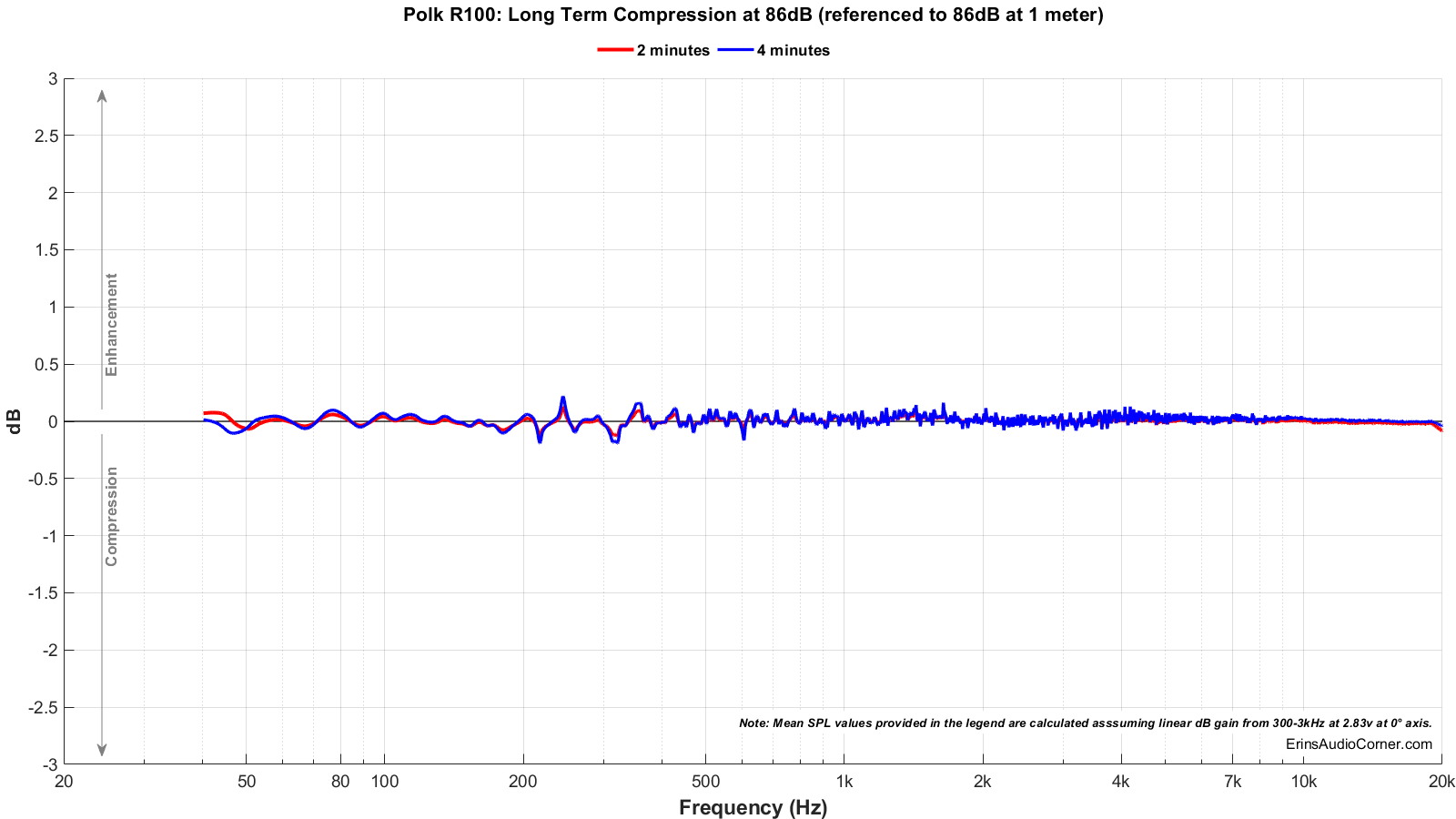
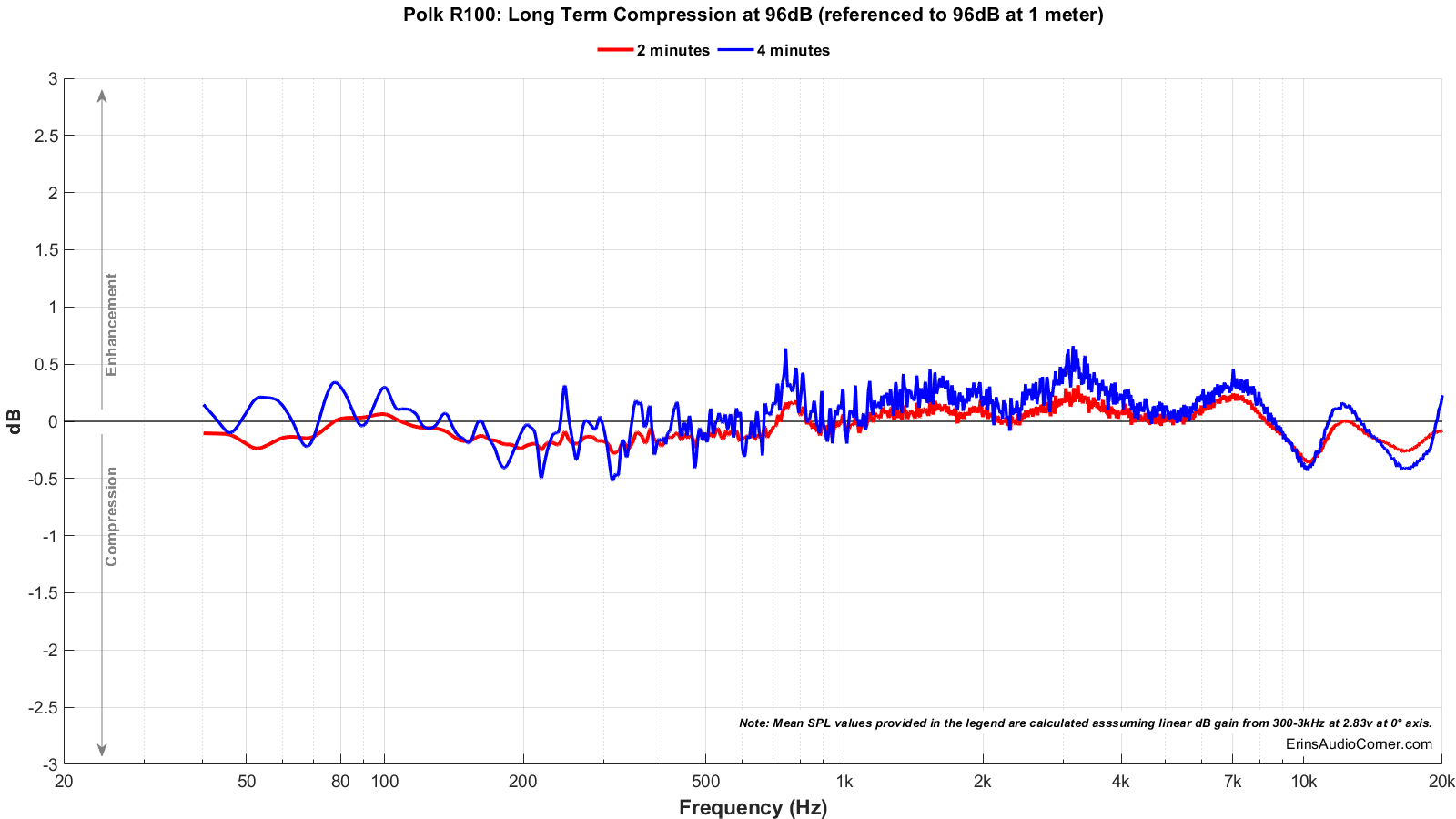
Grille Effect

Parting / Random Thoughts
- The thing that jumped out to me first about this speaker was the punch in the midbass/midrange. Given they only go so low they obviously don’t have any real “heft” to the bass but snares have a lot of attack to them. I am tempted to say that I noticed the attack more because of the lack in lower bass but as I listened to the speakers with this thought in mind, the more I convinced myself that what I was hearing was more about midrange quality rather than bass. In this respect, these speakers sound much more like a small but good studio monitor.
- Tracks with shimmer to them (cymbals, chimes, synth, etc) tend to stand out. At more mild volumes of about 75-80dB at my listening distance of 4m there is plenty of dynamic range and the highs work to provide some ‘bite’ in a good way. But as I turned the volume up things started to become too treble heavy. I will say the distortion does not seem to be an indicator and if I had to guess what the cause for this is, I’d say it’s due to the directivity mismatch between the mid and tweeter thanks to the low order crossover on the midrange (check the nearfield plot for what I mean). At lower volumes the tweeter stands out but not annoyingly so. At higher volumes the tweeter becomes too much. Check the Estimated In-Room Response graphic and you’ll see a +3dB rise in the high frequency relative to the trendline set by the midrange. Turning the speaker off-axis kind of helps this but not a lot; not unless you turn the speaker off-axis by a good bit. Say, maybe 20° or more.
- Lots of compression in the LF at high volume. Use a subwoofer (as if you didn’t know that anyway).
- It is worth noting that the nearfield data does show no resonance from the woofer. Thanks to the low-order LPF on the mid, you can get an idea of how well the breakup modes are handled in this mid and based on the nearfield data, it looks quite good. Well done engineering on the “turbine cone”.
- The nearfield data shows a resonance of some sort that spans an octave; from 500Hz to 1kHz. The impedance data shows a blip around 400Hz. I’m not sure of the cause of each and I’m not sure they’re related. However, this leads to an SPL increase as is clearly indicated from the horizontal globe plot (look for the high energy indicated in red that shows up at the back of the speaker). You can also see a clear uptick in distortion at this frequency at all orders but most notably in the higher order distortion modes. I did perform an accelerometer test on the side of the enclosure but it didn’t show me anything of merit. This leads me to wonder if the culprit is the port itself. But all I have is conjecture on this matter without disassembling the speaker and that’s not something I have time nor desire to do.
This speaker has good performance and is a really nice looking speaker, at least to me. I like the grille cloth color. I like the wood finish look. I like the overall aesthetic. And you pay for it. The performance could have been better with some crossover modifications and the added cost instead went toward the look of the speaker. That’s not necessarily a bad thing. I just feel like this speaker could have been an even better buy with a little bit more put into the crossover.
As stated in the Foreword, this written review is purposely a cliff’s notes version. For more details about the performance (objectively and subjectively) please watch the YouTube video.
Support the Cause
If you find this review helpful and want to help support the cause there are a few ways you can do so below. Your support helps me pay for new items to test, hardware, miscellaneous items needed for testing and costs of the site’s server space and bandwidth. Any help is very much appreciated.
Or using my Amazon affiliate link, if you are interested in these speakers, which helps me gain a small commission at no additional cost to you.
You can also join my Facebook and YouTube pages if you’d like to follow along with updates.